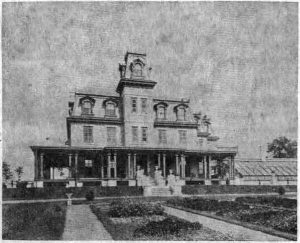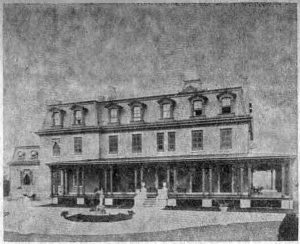Saturday, December 14, 1935, was “Anthony Wayne Day” in this Main Line town which bears the “mad” General’s name. With a parade, pageantry and patriotic mass meeting the citizens of Wayne on that day honored their own particular Revolutionary hero.
More than 2000 marched in the parade along the Lancaster Highway, which began the day’s celebration. From the stand opposite the Wayne Library, the parade was reviewed by Major General Edward C. Shannon, 28th Division, Pennsylvania National Guard, and Colonel Clarence R. Day, Chief of Staff, 79th Division, U.S. Army. Afterwards, many of them joined other Radnor Township citizens at the mass meeting held in the High School Auditorium.
Among the speakers at this meeting were the late W.W. Montgomery, Jr., of Radnor, who talked on the “Life and Times of Anthony Wayne”. A special musical program was provided by the Wayne Musical Coterie, the “Merriemen of Wayne”, and by Welsh singers in their native costume. The focal point of their festivities was the presentation to the Township by the “Wayne Committee for Civic Progress” of a set of eight highway signs, designed in the manner of the Colonial period.
These signs were the work of Arthur Edrop, of the Wayne Art Center, and of Wayne Martin, of the Art Department of Radnor High School, with assistance from Herbert S. Henderson on the design and construction of the posts with their decorative Welsh dragons. The presentation was made by the late Rev. Crosswell McBee, the rector of Old St. David’s Church, with formal acceptance of the signs made by Joseph M. Fronefield, 3d, at that time president of the Radnor Township Board of Commissioners. Until a few years ago these signs, eight in number, had their places along Conestoga road as well as the Lancaster Highway. Two of them marked the confines of Ithan while two defined the Radnor Township limits, and four marked the towns of Wayne and St. Davids.
The story of these highway signs is an interesting one, dating back several years before their presentation to the Township. In the early days of its existence as an organization, the Wayne Art Center had discussed the appearance of the town’s business section and the need for planned consideration for future building. Realizing their responsibility as an influence in the life of the community, the members deemed themselves justified in “stepping out of the classroom and lecture hall” and warning their fellow townspeople of what their community faced if they permitted it to have “a mere topsy-like growing-up”. Thus, they might be threatening it with “the fate of other towns, with their gas stations, hot dog stands and the like, already a blot on the highway.”
After discussion at several of its own meetings, the Art Center members decided that they should bring the matter before a larger audience, at which a spokesman from their group would express their views. With the help of the local Chamber of Commerce, a meeting was called.
Frederick Richardson, then president of the Wayne Art Center, was the main speaker. He addressed the meeting on the relationship between a well-planned and well-kept business section and a residential area such as Wayne.
Mr. Richardson, an art collector and connoisseur, as well as a man widely known in insurance circles in Philadelphia, warned his listeners that the township of Radnor risked being dubbed “a community with a Mary Ann front and a Queen Ann back”. It would be a pity, Mr. Richardson continued, if a community rated as one of the wealthiest in the world, priding itself on the attractiveness of its homes, “should so neglect its front, the shopping sections along the highway, that it repelled, rather than attracted the motorist who drove past.”
Looking into the future, the president of the art center said that he thought Wayne might well become “the most important town between Philadelphia and Lancaster” with its strategic location on the highway, its relation to Philadelphia and Valley Forge as well as its proximity to well known colleges and schools. He stressed the importance of building with thought for the future, emphasizing always the Colonial style of architecture.
Mr. Richardson’s talk was followed by one given by George Howard Bickley, a prominent Philadelphian, member of the firm of DeArmond, Ashmead and Bickley, well known firm of Philadelphia architects. To illustrate his talk, Mr. Bickley had shown a sketch showing possible improvements on one of Wayne’s busiest streets. This sketch was afterwards reproduced in “The Suburban”. On continuing his talk, the speaker emphasized the historical association of the Township, in urging that in future building the Colonial motif might be followed. This would not necessarily be by way of “a set pattern to be followed by all, but rather a working out of the problems with the Colonial tradition as an inspiration.”
The audience which Mr. Richardson and Mrs. Bickley addressed showed great interest on many related subjects, such as playgrounds, a community house, and more adequate housing in less favored sections. As a result, it was decided to form a general committee with its members representing various civic and social organizations in Radnor Township. And thus the Wayne Committee on Civic Improvement came into existence.
The organizational meeting of the “Joint Committee on Wayne Development”, as the group was first called, was held on Wednesday, November 1, 1933, in the Library of the Radnor High School. Fourteen members of this Joint Committee were present, including Arthur Edrop, from the Wayne Art Center, who called the meeting to order.
Others were Miss Mary L. Walsh, Charles A. McClure and Clarence J. Tolan, from the Art Center; Miss Velma Turner, the Neighborhood League; Miss Susan Dorothea Keeney, Mrs. Duffield Ashmead and Mrs. Charles W. Bayliss, the Garden Club; Mrs. Lilian B. Aman, the American Legion Auxiliary; Mrs. T. Magill Patterson, the Saturday Club; Charles H. Shepler, the Wayne Public Safety Association, and Dr. Seneca Egbert, C. Lawrence Warwick and Harlow H. Loomis, from the North Wayne Protective Association.
Nominations for permanent officers for the newly formed Wayne Civic Improvement Committee, as this organization was henceforth known, resulted in the election of Mr. Edrop as chairman and of Mrs. Patterson as secretary and treasurer.
The objects of the Committee were summed up as follows: “To make Wayne as attractive a community to shop in as to live in… architecturally in harmony with its Colonial and Revolutionary tradition… to plan for its further development with a proper regard for beauty, dignity, economy, and efficiency in all those things affecting its many sided activities… to build for the future rather than for the immediate present”.
(To be continued)

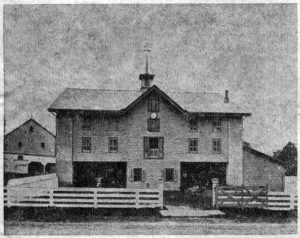
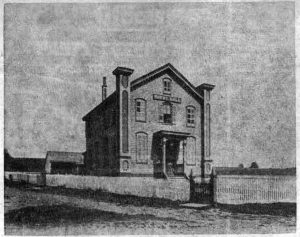
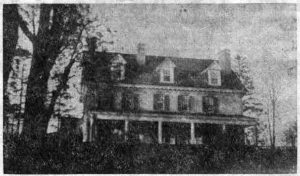
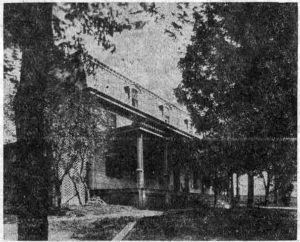
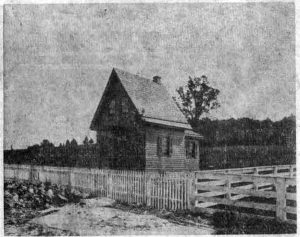
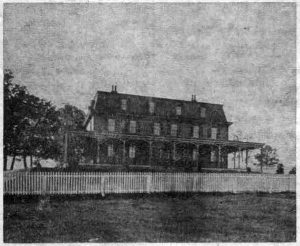
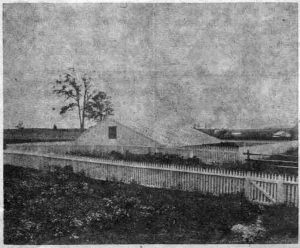
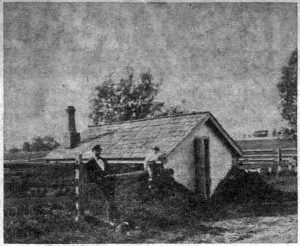

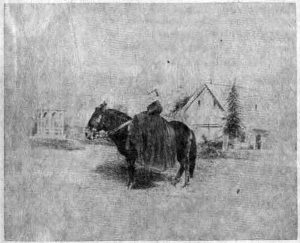
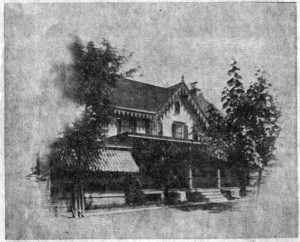 The cottage, which was occupied by the Askin family during the period when the more pretentious Louella Mansion was under construction, stood well to the northeast of the latter, with its back to the railroad. The small summer house was located between the Cottage and the Mansion.
The cottage, which was occupied by the Askin family during the period when the more pretentious Louella Mansion was under construction, stood well to the northeast of the latter, with its back to the railroad. The small summer house was located between the Cottage and the Mansion.